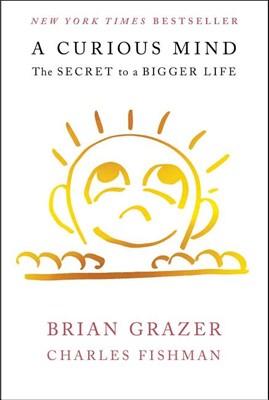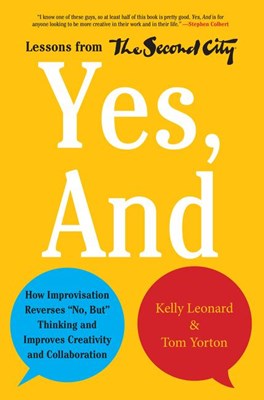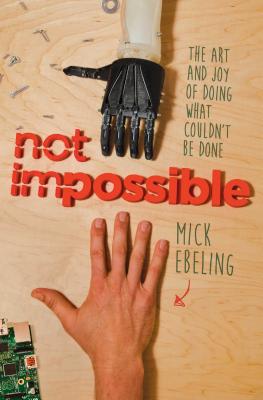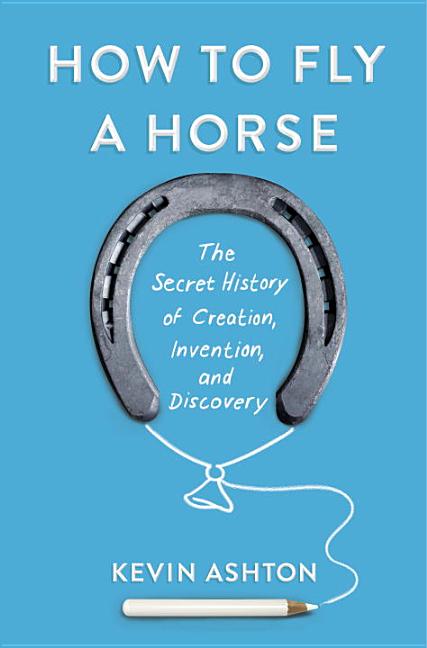Inside the Longlist: Innovation & Creativity
December 01, 2015
Our Special Projects Manager, Michael Jantz, looks inside the Innovation & Creativity category of this year's 800-CEO-READ Business Book Awards.
For all its ubiquity in the world of business and in society as a whole, the word innovation can present a formidable challenge when called on for definition. This, however, does not diminish the word’s popularity. Some companies go as far as appointing Chief Innovation Officers, perhaps in hopes that a simple invocation of the word will produce that sought-after 20% growth for next year or the new acquisition that will take the company to the next level. Even in our very narrow world of business books, innovation is very broadly wrangled. And if what is found in the books of today is a reflection of the world of today—the one in which we live and work—then I find it all the more challenging to grab ahold of what exactly innovation is, how it happens, or what it actually means for companies and the people they employ.
But, then there is a simple solution for the challenge of reading, thinking about, and rating business books. It’s the categories, sub-categories, and standards of minutiae that keep the task of selecting books from devolving into a game of roulette, especially when the category becomes vast and unwieldy. So viewing the dozens of books submitted into the category of innovation through this lens of rules and criteria helps us discover that a full two-thirds of innovation titles submitted were “how to” books. How to innovate, how your company can foster innovation, how to think creatively, or some variation on this theme. The remaining one-third of the category pieces itself together with deep manifestos and industry studies—books on things like changing a country’s infrastructures, books on electric cars or the next evolution of the battery. With these basic tools for sifting and winnowing, we plunge into the stacks of innovation and creativity for 2015.

It would be dishonest to write off the celebrity of Brian Grazer when it comes to calculating what exactly draws you to A Curious Mind. The film and television producer’s entry into this world of business books alongside co-author (and no stranger to excellent narrative) Charles Fishman brings a compelling collection of anecdotes that revolve around a very simple theme—curiosity. However simple in principle, it’s Grazer’s contention that curiosity is something that requires active thought and application throughout business and life—along with his own methods and star-filled stories—that imparts the most value to the theme. What A Curious Mind lacks in scientific foundation, it makes up for in charm, readability, and the irrefutable success of its author—in a field that requires him to be a project manager, marketing, financier, boss, and play many other roles all at once. There might not be enough room in the world for each of us to be world-class Hollywood producers, but it can be thrilling to step into the shoes of one and see the world how he does.
Perhaps the most natural turn from the world of Hollywood film and television is into a world of comedy and improvisation, and Kelly Leonard and Tom Yorton’s Yes, And takes us there. The book’s titular mantra is the foundation of both Second City Theatricals (Leonard’s domain) and Second City Works (Yorton’s). The book is a bit of a case study turned how-to, and while it might initially seem like a leap to go from improv to the world of business, you’ll find out quickly that the leap happened long ago, when Second City Works began offering its training to corporate clients, teaching non-theatric types how to apply the Seven Elements of Improv to the world of communication inside company walls. It’s hard not to get sucked in by the big SNL references or by thinking of this actor or that or comedian you know to be a Second City alum. It’s so much easier to take on new ideas when they’re coated with the glittery dust of Amy Poehler and Stephen Colbert! What it all comes down to, though, is that Yes, And presents a shiny new, yet proven, perspective on approaching and navigating the sea of new ideas and possibilities—the very seeds of innovation.
“Yes,” however, might not be the default reaction most of us are programmed to produce, especially when posed questions or opportunities that pull us out of our comfort zone. Mick Ebeling confesses to just such a situation in Not Impossible, a kind of memoir of his experience in finding motivation to innovate when faced with a deep desire to simply help. With a clear talent for storytelling, Ebeling crafts an anecdote-rich manifesto that demonstrates what passion looks like when it hits you hard and simply forces your hand. Ebeling himself confesses, “I did not set out to discover the power of Yes. [...] I set out to go surfing.” And it’s true, at the beginning of the book Ebeling is surfing. But by the end of the book, he has literally changed lives for the better. I don’t know if it happens to everyone, but every so often I get one of those ideas—something I think it would be great to simply drop everything for and DO. It might be something to effect social change or something less grand. Those ideas are fun to mull over, but easy to tamp down with thoughts of tomorrow’s schedule or by cracking the spine on a new novel. Ebelings stories should make us all greet that next idea as an opportunity to do something truly good with an aggressive “Yes.”
Moving away from the world of narrative, we come to a different side of innovation and creativity altogether. Kentaro Toyama’s Geek Heresy: Rescuing Social Change from the Cult of Technology is not specifically a book about how to be creative or how to innovate, but the author has real first-hand experience with these activities, being a former Microsoft researcher. The book is more specifically about to effect social change, and we’ve all seen the commercials from technology corporations would like to make it known that technology is the way things get done, the way people, organizations, and countries do great things. Toyama shatters this idea with his extensively-researched argument for why gadgets are simply gadgets, while people are the true agents of change and the primary capital in any pursuit of change. Geek Heresy isn’t a true or complete heresy, for after reading Toyama’s argument it’s clear that technology has its place, but what’s even more clear is that that place is under smart and empowered human beings.
Another big idea to challenge big ideas comes in Kevin Ashton’s How To Fly a Horse. The book’s historical breadth of industry and inventions is impressive, even beginning with the story of how vanilla beans came to be industrially farmed. Ashton uses this delightfully diverse history to illustrate his main argument: there are no lone geniuses. Though he’s not the first to make the assertion, his recipe is our favorite so far. How to Fly a Horse takes well-researched historical cases of invention, Ashton’s own expertise and experience with innovation, and finally adds a splash of the author’s own badass attitude as if to say, “I don’t care if you don’t like it, this is how it works!” By the end, How to Fly a Horse destroys the grand myth of individual innovators and lone creative types, and puts the act of innovation and credit for creating them back into the hands of organized people and the communities they exist in.
And speaking of the communities we exist in… we always feel fortunate this time of year to be in a community of booksellers, publishers, customers, and authors that keep propelling this conversation forward in business year after year.






